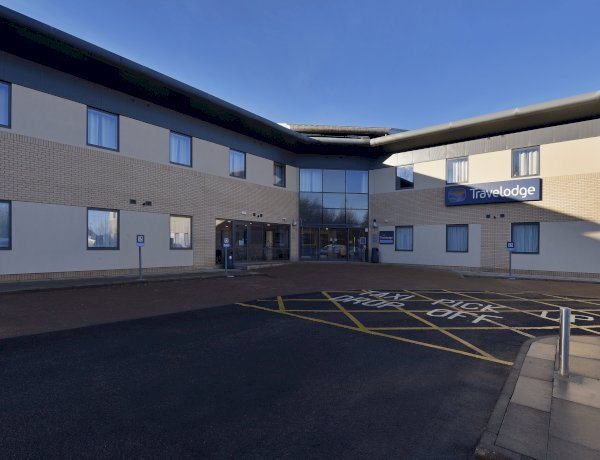Cosmetic Surgery Trends in 2025: What’s New, Popular, and Proven Safe
Explore the top cosmetic surgery trends of 2025 including natural enhancements, global options, safety standards, and non-surgical innovations.

Cosmetic surgery in 2025 continues to grow as patients seek safer procedures, better outcomes, and more natural-looking results. Improved technologies, increased global access, and growing emphasis on emotional well-being are all shaping the way people approach aesthetic enhancement today. According to the International Society of Aesthetic Plastic Surgery (ISAPS), global demand for cosmetic procedures is expected to rise by over 11% in 2025, with particular growth in Europe.
In this guide, we explore the most important cosmetic surgery trends of 2025, including new techniques, international options, and what patients are prioritizing now more than ever.
Shift Toward Natural Enhancements

In 2025, patients are increasingly asking for subtle, realistic changes. Instead of dramatic transformations, the focus is now on enhancements that retain one’s natural features. This change is especially visible in:
-
Mini-facelifts, which tighten sagging skin in the lower face without a pulled-back look
-
Fat transfer procedures, replacing fillers to restore natural volume in areas like under-eyes or cheeks
-
Rhinoplasty techniques that reshape noses while keeping ethnic features intact
A 2024 RealSelf survey found that over 70% of patients preferred results that "don’t look like surgery," encouraging clinics to adopt softer techniques and less invasive methods.
Technology-Driven Surgery

Advanced technology now plays a major role in both planning and performing cosmetic procedures:
-
AI-powered imaging tools allow patients to preview potential results during consultations
-
Robotic-assisted surgery is being used for ultra-precise incisions, especially in facial or neck work
-
3D-printed surgical models and implants ensure greater symmetry and customization
These tools have reduced complication risks, shortened recovery times, and improved patient satisfaction by up to 30%, according to recent clinical reviews.
International Cosmetic Surgery Options

Rising healthcare costs and long wait times have led many patients from the UK and Western Europe to consider surgery abroad. Countries such as Poland, Turkey, and Hungary have seen a noticeable increase in medical tourists due to lower prices and high standards of care.
For example:
-
A breast lift that costs £6,000 in the UK may cost £2,800–£3,200 in Poland
-
Rhinoplasty priced at £7,000 in London could cost around £3,500 abroad
Many patients now explore options for cosmetic surgery in countries like Poland, where private clinics offer regulated procedures, English-speaking staff, and cost savings compared to the UK.
Before booking surgery abroad, patients are advised to:
-
Verify the clinic’s accreditation (such as ISO or EU compliance)
-
Ensure the surgeon is board-certified
-
Understand the full aftercare plan, including follow-up and recovery
Most Popular Procedures in 2025

The most in-demand surgical procedures in 2025 include both traditional options and newer approaches. Based on ISAPS and UK aesthetic clinic data, the top procedures are:
| Procedure | Avg. Cost (UK) | Common Age Group | Purpose |
|---|---|---|---|
| Eyelid Surgery | £3,500–£5,000 | 40–65 | Removes droopy eyelids and under-eye bags |
| Liposuction 360 | £4,000–£7,000 | 30–50 | Fat removal from full midsection area |
| Rhinoplasty | £5,000–£8,000 | 18–35 | Refines nose shape and improves airflow |
| Breast Lift | £4,500–£6,500 | Post-pregnancy | Raises and reshapes sagging breasts |
| Thread Lifts | £800–£2,000 | 30–55 | Minimally invasive facial tightening |
There’s also a notable rise in male cosmetic procedures, particularly:
-
Chest reduction (gynecomastia correction)
-
Eyelid surgery
-
Chin and jawline contouring
Men now comprise about 10% of cosmetic surgery patients, up from less than 2% a decade ago.
Read Also: The Role of GCP Consulting in Pharmaceutical Innovations
Non-Surgical Treatments in High Demand

Non-invasive treatments continue to grow in popularity. In 2025, they make up more than 60% of all cosmetic interventions worldwide. Common options include:
-
Thread lifts using dissolvable sutures for facial support
-
Cryolipolysis (fat freezing) for body contouring without surgery
-
Injectable rhinoplasty for minor nose reshaping
-
Microneedling with platelet-rich plasma (PRP) to boost collagen and skin repair
These treatments are popular for their:
-
Short recovery time
-
Affordability compared to surgery
-
Reversible and low-risk nature
The non-surgical cosmetic procedure market is projected to grow from $25.81 billion in 2024 to $28.63 billion in 2025, with a CAGR of 10.9%.
Emotional Well-being and Cosmetic Surgery

In 2025, many clinics now include mental health assessments as part of pre-surgery screening. This helps ensure patients are:
-
Choosing surgery for the right reasons
-
Realistic about the expected results
-
Not affected by body dysmorphic disorder or external pressure
Clinics offering psychological support have seen a measurable rise in patient satisfaction and long-term well-being.
Safety Standards and Patient Protection

Stricter regulation has improved patient safety across Europe and the UK. Certified clinics are now required to:
-
Use only CE-marked or FDA-approved devices
-
Maintain operating rooms under ISO hygiene standards
-
Provide clear emergency protocols and medical oversight
Complication rates in accredited clinics are now below 1.5%, according to ISAPS.
Patients are strongly advised to avoid unverified clinics advertising on social media. Reputable providers will:
-
Share surgeon qualifications
-
Offer transparent pricing
-
Explain risks and post-op care thoroughly
Checklist for Cosmetic Surgery Abroad

Before Travel:
-
Book a virtual consultation
-
Share complete medical records
-
Inquire about travel insurance with medical coverage
While Abroad:
-
Stay for 7–14 days to allow recovery
-
Have local support (translator, nurse, or companion)
-
Understand the aftercare process, including post-operative appointments
After Return:
-
Maintain communication with your surgeon
-
Monitor for delayed symptoms or complications
-
Attend any required virtual follow-ups
Read Also: Radiotherapy vs Chemotherapy: Understanding the Differences and Choosing the Right Treatment
Final Thoughts
Cosmetic surgery in 2025 is more precise, safer, and focused on individual well-being than ever before. Patients are making smarter decisions—seeking realistic changes, evaluating mental readiness, and exploring international options with care.
Whether you’re interested in a subtle lift or a more defined body contour, it’s essential to:
-
Research thoroughly
-
Ask the right questions
-
Choose qualified professionals
Safe, satisfying outcomes come from informed choices and trustworthy providers.
FAQs
Q1. What is the safest cosmetic surgery procedure today?
Mini-facelifts and eyelid surgery (blepharoplasty) are generally considered safe when performed by certified professionals.
Q2. Is surgery abroad safe?
Yes—if you choose a regulated clinic with experienced, board-certified surgeons and proper medical facilities.
Q3. Are non-surgical options permanent?
Most non-surgical treatments last 6–12 months. They are ideal for maintenance or trying out results before committing to surgery.
Q4. How long does it take to recover from a facelift or liposuction?
Recovery varies, but most patients return to normal activities in 10–14 days. Full results may take 4–6 weeks.
Q5. Do clinics provide support after returning home?
Reputable clinics often offer virtual follow-ups and emergency contact options to monitor your recovery.




























